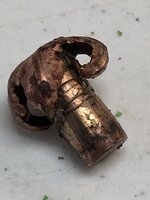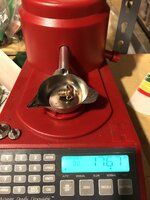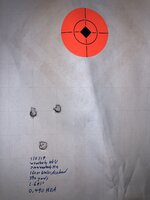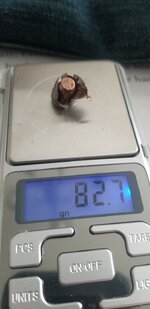MikeDeltaFoxtrot
WKR
Yesterday was opening day of rifle season Virginia. I was blessed with a great morning hunt. I took a nice 8 point buck at 101 yards right at the beginning of legal shooting hours at 6:30 a.m. I then shot a button buck an hour later at 248 yards. I thought the latter was a doe, but it happens. Both animals dropped in their tracks and were DRT. The buck was a heart shot and the button buck was a double lung. That is of course good. Here is the buck.
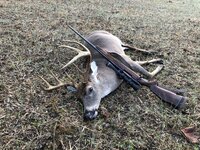
The shot on the button buck was through and through, but on the big buck I recovered the bullet inside the hide on the opposite shoulder. I guess I can't complain about the result, but what worries me is that what I recovered only weighed 90 grains, and it started at 160. That is not impressive from a weight retention standpoint.
The bullet was a 160 grain Nosler Accubond in 7mm, fired from my 7mm Weatherby Magnum at about 2970 fps. The rifle is a Mark V from 1985, made in Japan. It is very accurate with this load. Here is the recovered bullet next to an unfired example.
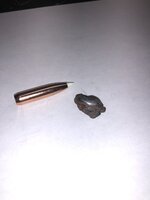
I had thought this load and rifle combination would be good to go for Elk, but the performance of the bullet makes me question that. Do others have experience with the Accubond moving fast? I welcome any thoughts.

The shot on the button buck was through and through, but on the big buck I recovered the bullet inside the hide on the opposite shoulder. I guess I can't complain about the result, but what worries me is that what I recovered only weighed 90 grains, and it started at 160. That is not impressive from a weight retention standpoint.
The bullet was a 160 grain Nosler Accubond in 7mm, fired from my 7mm Weatherby Magnum at about 2970 fps. The rifle is a Mark V from 1985, made in Japan. It is very accurate with this load. Here is the recovered bullet next to an unfired example.

I had thought this load and rifle combination would be good to go for Elk, but the performance of the bullet makes me question that. Do others have experience with the Accubond moving fast? I welcome any thoughts.

